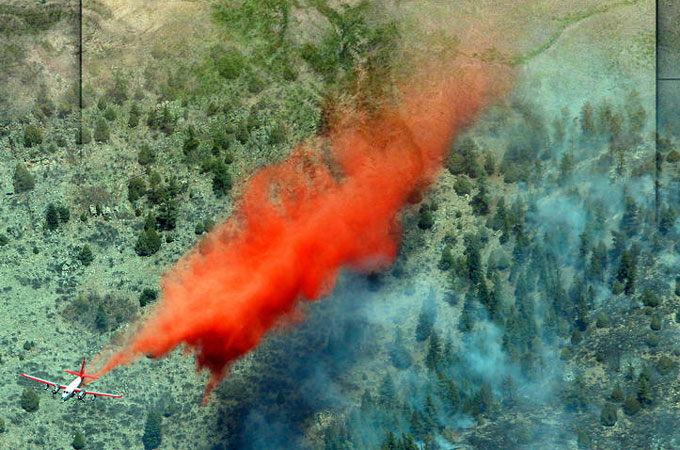Wildfires hit Arizona
Tinder-dry conditions have encouraged fires to break out across the southwestern US

 Retardant is dropped from aircraft to diminish the spread of wildfires [AP]
Retardant is dropped from aircraft to diminish the spread of wildfires [AP]
Wildfires are raging across the drought-hit US state of Arizona as strong winds and low humidity fan the flames.
At least four blazes have broken out across central and eastern parts of the state, covering a total of 70 square kilometres.
Parched swathes of forest, brush and grassland have been at risk of fire for many months and the current weather conditions are wringing what little moisture remains in the vegetation.
Keep reading
list of 4 itemsAfter the Hurricane
World’s coral reefs face global bleaching crisis
Why is Germany maintaining economic ties with China?
A trough of low pressure in the region is bringing strong and gusty winds, yet the air remains very dry with relative humidity below ten percent.
The largest blaze, the Sunflower Fire, has burned almost 50 square kilometres in the Tonto National Forest, some 60 kilometres north of Phoenix. Just seven percent of this blaze has been contained.
The Gladiator Fire in central Arizona has already destroyed buildings and 350 residents of Crown King have been evacuated.
A total of 865 firefighters are battling to control these two blazes and up to six aircraft have been dropping retardant to help the effort.
There are fears that 2012 will be as bad as, or even worse, than 2011 which was the worst for wildfires across the state on record. There were more than 2,000 recorded fires that year, with nearly 4,000 square kilometres consumed by the flames.
Worryingly, there has been an upward trend in wildfires across the West over the last quarter of a century. A study by the US Forest Service and US Geological Survey found that between 1984 and 1999 an average of 8,900 square kilometres were destroyed by fire. Between 2000 and 2010 that figure had risen to almost 26,000.
Whilst climate change and La Nina may be factors in this rise, many fires are started by humans, whether deliberately or accidentally. At least one of the current blazes is believed to have been started this way.
The outlook is for a high fire risk across the four-corner states of Utah, Colorado, New Mexico and Arizona. The air is expected to remain very dry with no significant precipitation. Strong winds may also be a factor at times over the coming week.